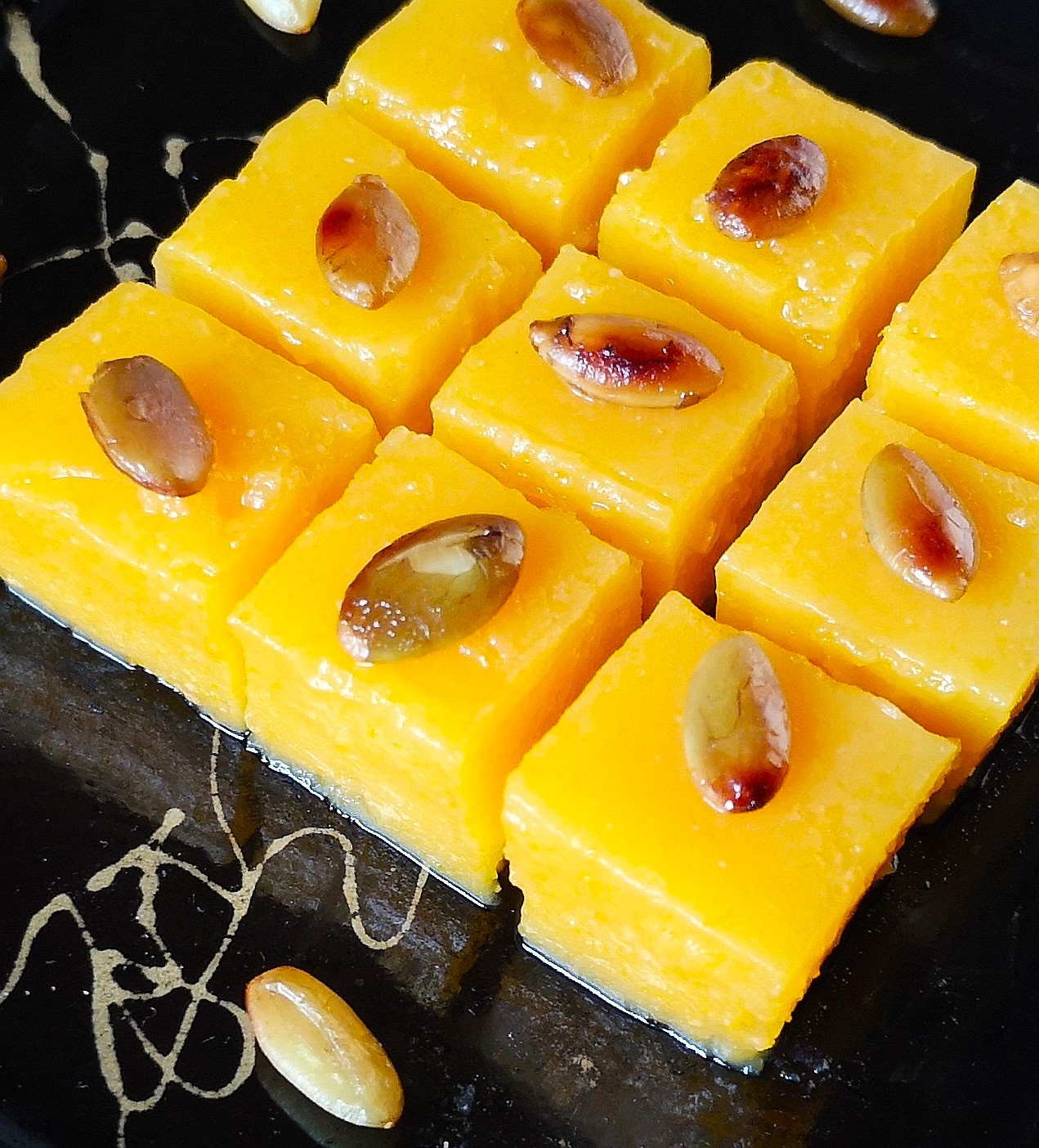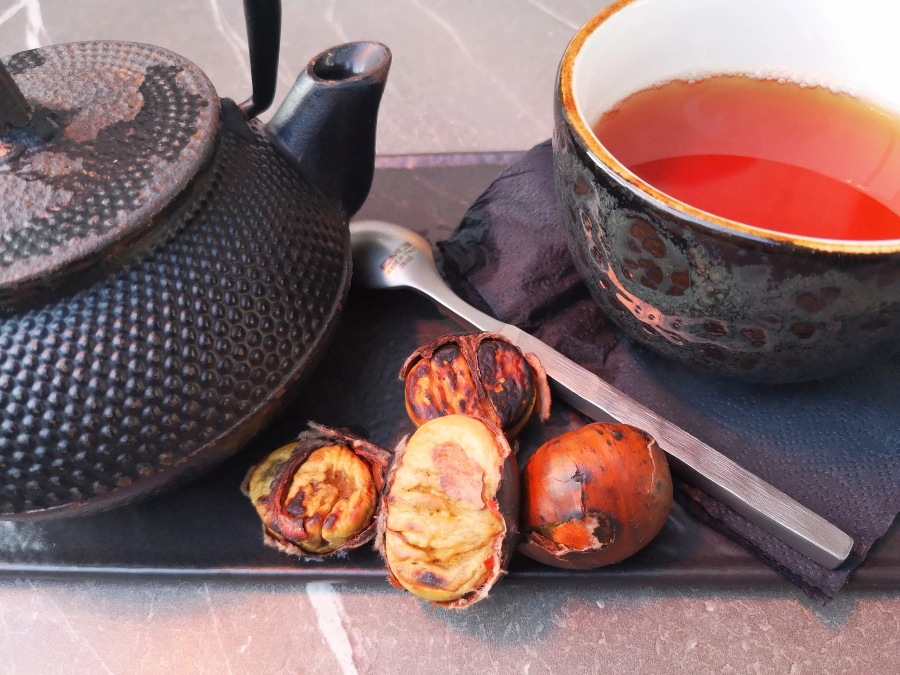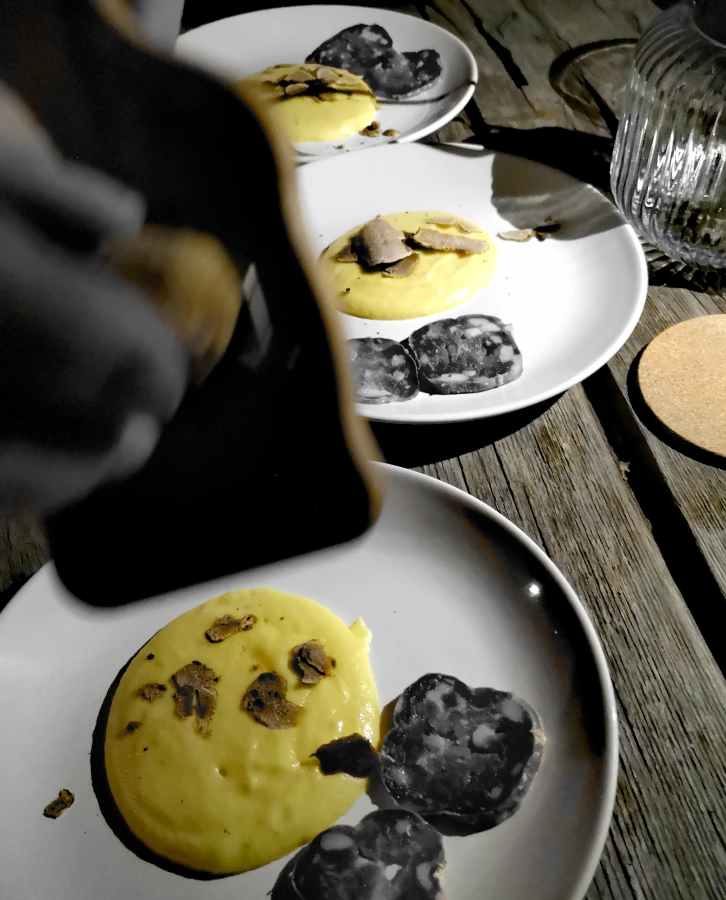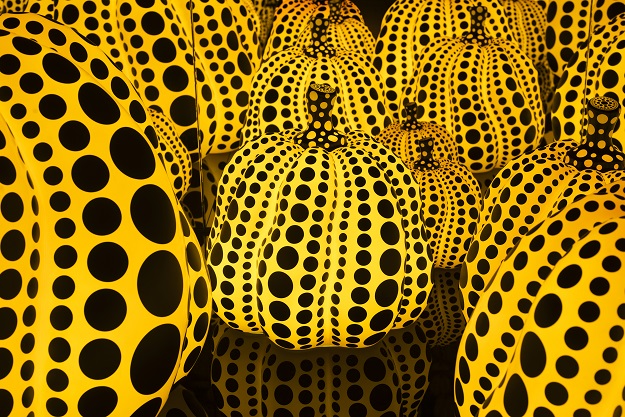
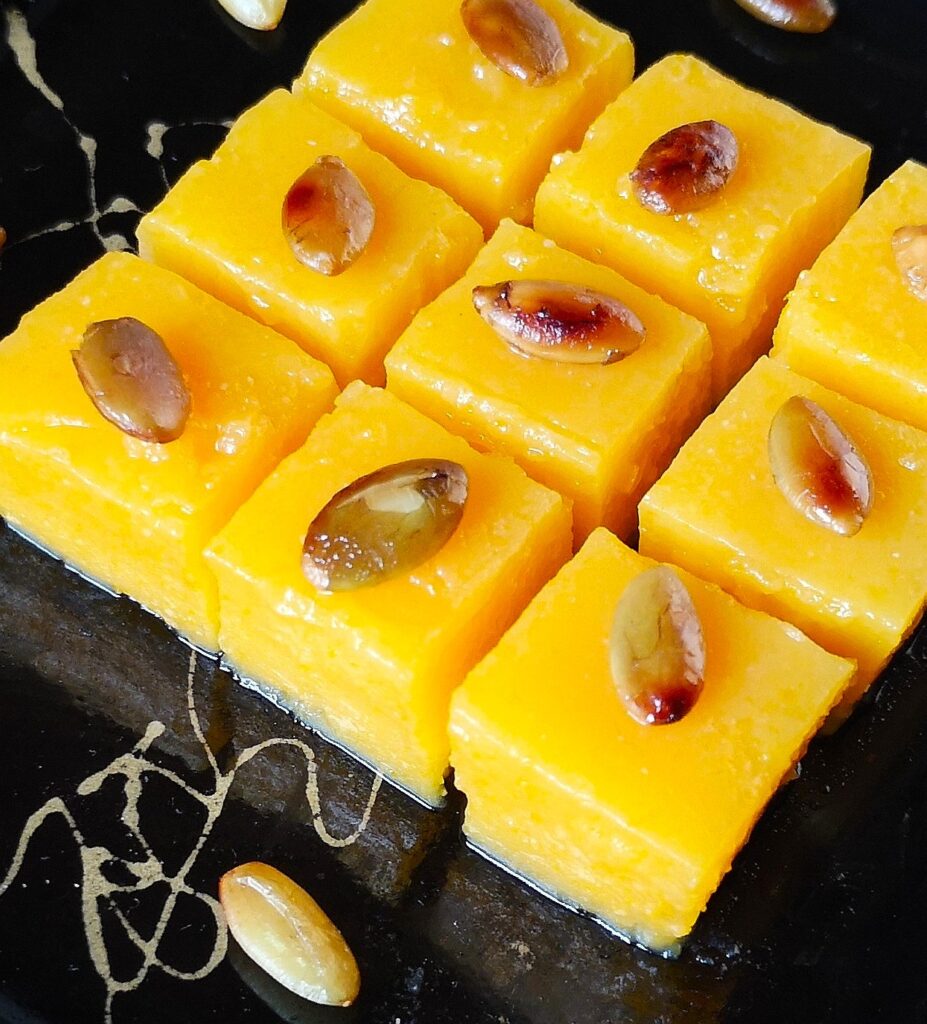
‘I love pumpkins’ pronounced the extraordinary Japanese artist Yayoi Kusama….’I love them for their humorous shape, their generous unpretentiousness and their solid spiritual base’.
I have to admit that I had never seen pumpkins or zucche in quite this way before, but it certainly started me thinking differently about them….and now I think I love them too!
I had been immediately captivated by Yayoi Kusama’s work when I visited an exhibition earlier this year which featured her ‘Mirror Room’ installation “Fireflies on the Water” in the Palazzo della Ragione in Bergamo’s medieval Città Alta.
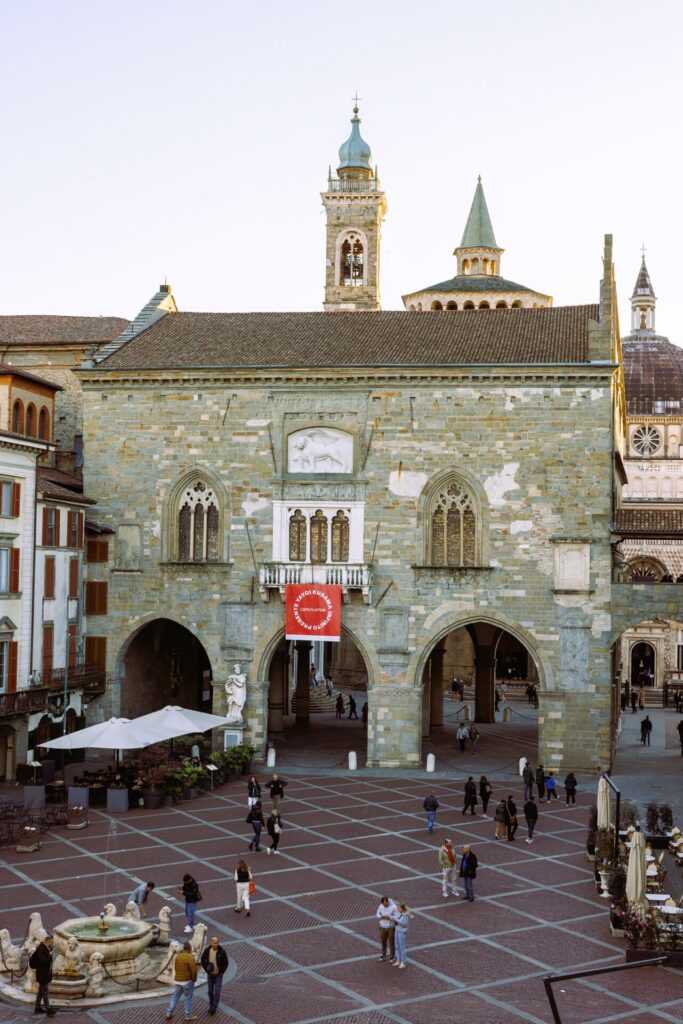
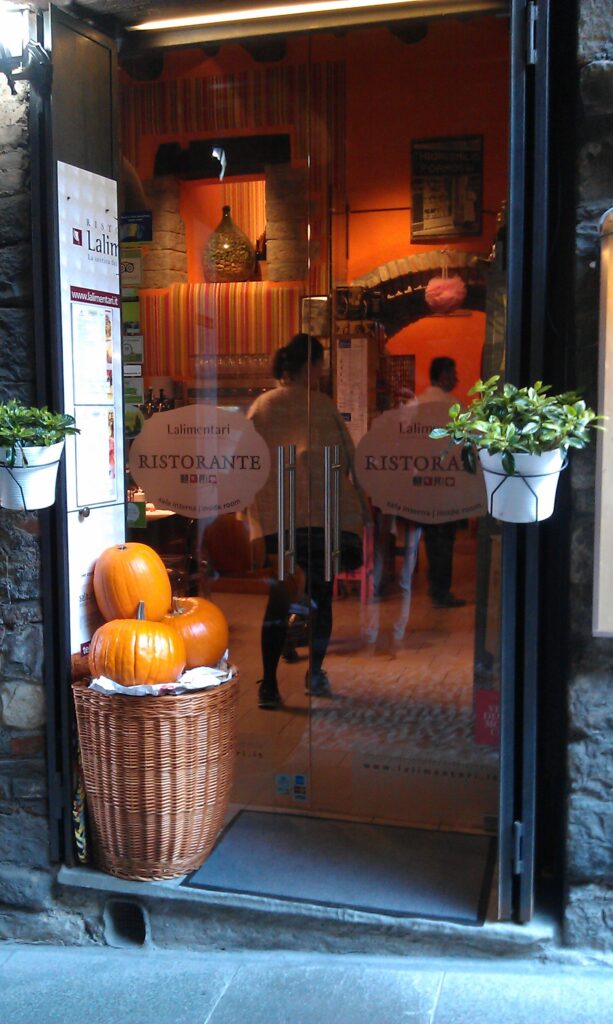
One by one we were all ushered into a dark, mirrored and silent room and were given a minute to stand alone on a platform over a pool of water, lit only by hundreds of tiny lights like fireflies. Kusama wanted us to abandon our sense of self and experience being part of an infinite space where we were everywhere… yet nowhere…but connected to everything.
Kusama calls herself an ‘obsessive artist’. Since childhood she has suffered from mental disorders, obsessions and hallucinations which to this day have never left her, but through her art she has managed to overcome her fears and find a sense of peace in the creative process.
She found this sense of peace when, by creating an image thousands of times or indefinitely, she found she could ‘self-obliterate’. A term she uses for being able to forget her physical body and self, and become one with her surroundings and nature… with infinity.


Remarkably, she’s now 95 years old and still lives voluntarily in a psychiatric hospital in Tokyo going daily to her artist studio close by.
Pumpkins however gave Kusama comfort and inspiration maintaining that ‘the shape of the pumpkins gave her human warmth’.
Her ‘Pumpkin Infinity Mirror Room’ first displayed at the 1993 Venice Biennale, was a mirror room filled entirely with yellow and black polka-dotted pumpkins …and this spotted pumpkin image has since become a symbol of her art.
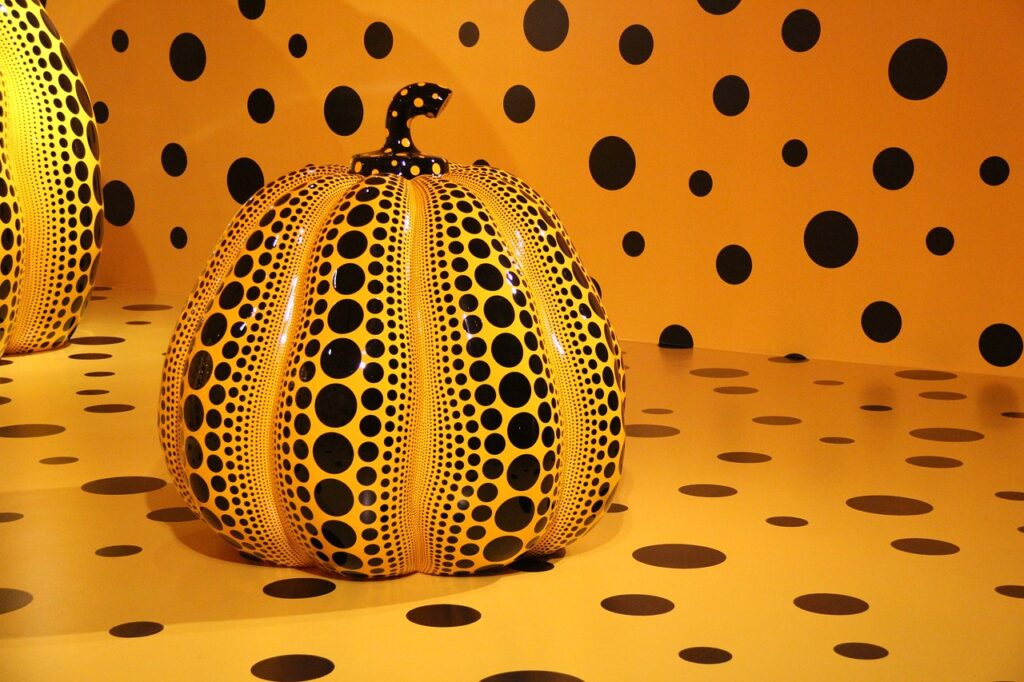

Meanwhile the non-spotted and very much living variety are in all Italy’s food markets right now, tumbling from shelves or lolling on floors, they seem to be bursting at the seams with goodness they can’t wait to give us … I can almost see them laughing and joking in a plump jolly way!
In fact for many cultures they represent abundance, good fortune and prosperity and if you use a mindful approach to eating, such as the Zen Buddhist approach of listening and ‘sensing’ food, you can start to feel the optimism, warmth and ‘joie di vivre’ that pumpkins bring.
Somehow, as Kusama felt, these lovable pumpkins seem to ‘mother’ and nurture us – which is much needed with winter approaching….or in times of stress, depression and acute anxiety….maybe like right now!
Wonderful for our mental health, they just make us smile! …even when they’re leering at us at Halloween in their role of warding off evil spirits!

It seems that pumpkins originated in Mexico over 9,000 years ago, and became an integral part of the cuisines of indigenous peoples around the world. Italy has been eating pumpkins since the Spanish introduced them in the early 1500s.
Although one thinks of eating pumpkin only in the autumn and winter months, here in Italy you can find fresh pumpkins up to the end of March. But the Japanese ‘Kabocha’ squash can be substituted for pumpkin and is found here all year round.
Normally pumpkin is cooked into hearty soups, risottos and stews or, probably most famously here in Italy as ‘tortelli di zucca’ , those pasta parcels filled with pumpkin puree….but in the recipe below I’ve used a lighter touch for zucca and with a more eastern approach.
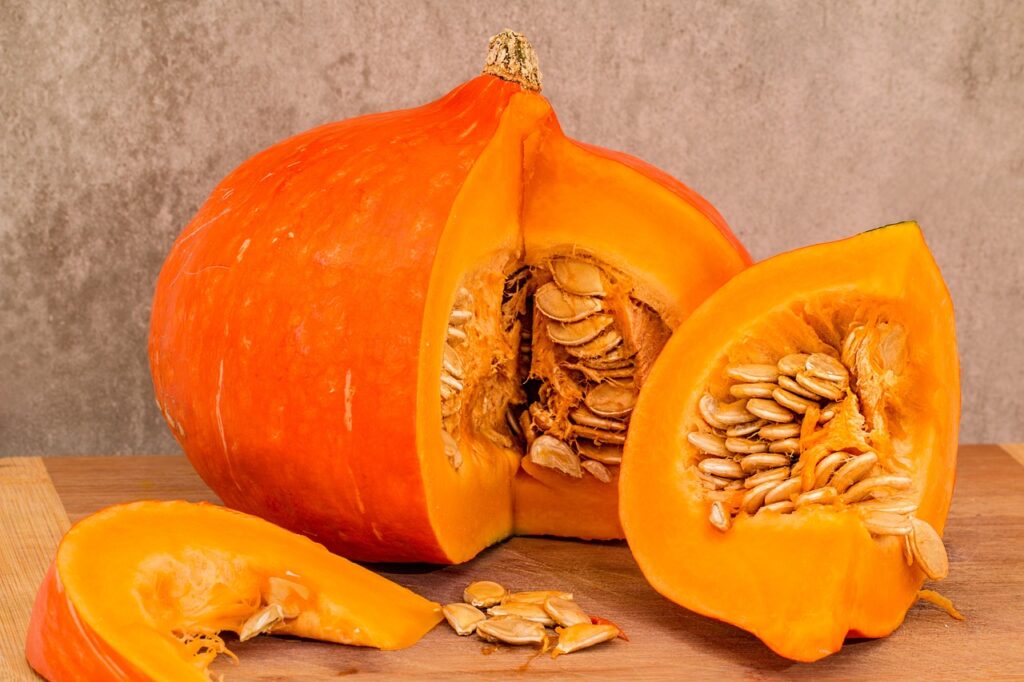
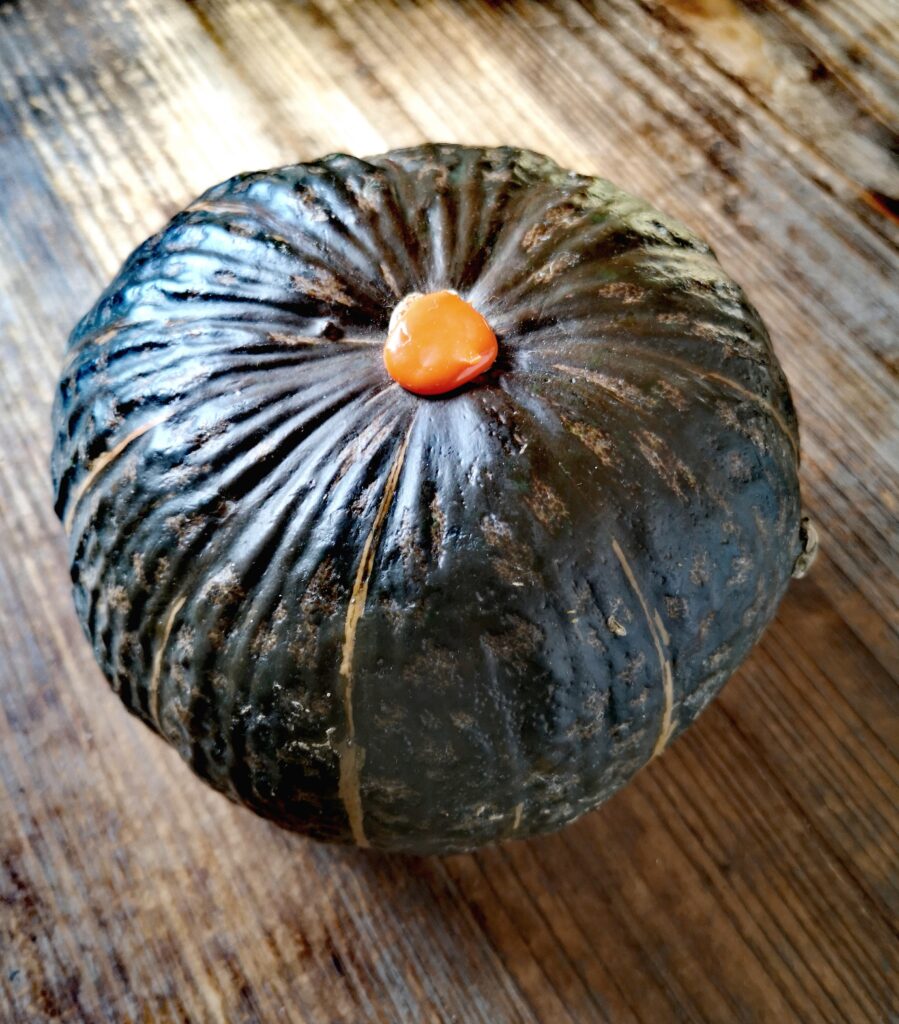
My recipe below is inspired by ‘Goma Dofu’ one of the traditional vegetarian dishes that form part of Shojin ryori cuisine (based on Zen monastery cooking), first introduced to Kyoto monasteries from China in the 7th and 8th centuries.
Goma Dofu is a savoury, creamy-smooth set pudding made from sesame seeds and kudzu powder (a gluten-free starch from the kudzu root). When made in the shojin ryori method it requires much time, patience, diligence and attention as the sesame seeds and kudzu are painstakingly ground by hand.
You’ll maybe be relieved to know that we’re not making it that way!
I’m basing my recipe on ‘tofu alla zucca’ , a simpler recipe from Kakuho Aoe’s book ‘La Cucina del Monaco Buddhista’.
Kakuho Aoe is a Buddhist monk and chef who sees Shojin Cuisine as more than just food preparation but as almost a spiritual practice, a life philosophy that promotes harmony, respect and gratitude towards all beings and the environment….and a way to purify the body and mind.
Although this pumpkin recipe is much simpler, it’s still made with the same principles in mind – mainly of gratitude and respect.
In Buddhism, orange or saffron yellow is the colour of illumination, the highest state of perfection so using the orange-flesh of pumpkin seems double appropriate!
RECIPE: PUMPKIN ‘AMUSE BOUCHE’
These pumpkin ‘amuse bouche’ (to ‘amuse the mouth’!) are, like tofu, a ‘bland’ base which you can then ‘accessorize’ with whatever ingredients you like. I recommend serving it with soy sauce …and wasabi and fresh coriander.
In homage to Kusama’s dotted pumpkin art, I’ve dotted each square with toasted pumpkin seeds! ….but you can also serve the tofu in more traditional larger squares if you prefer.

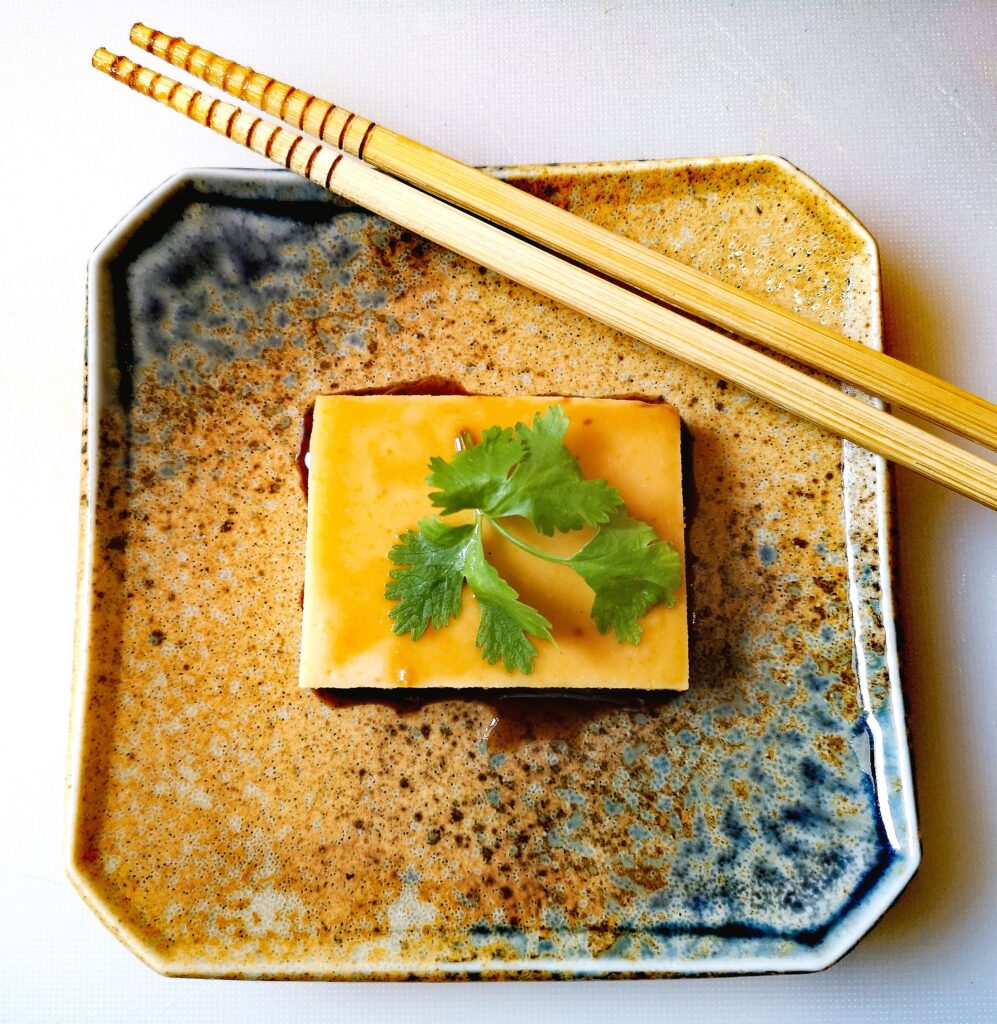
Serves: 2
Preparation time: 10 minutes
Time to roast pumpkin: c. 40 minutes
Preheat oven to 200C/400F
I’ve roasted the pumpkin first because not only does it bring out the flavour more, but it also makes the pulp drier, allowing it to set firmer.
Have ready a slightly damp container, ideally about 12cm x 7.5cm – I didn’t have this size so used a slightly larger one of 17cm x 12cm. This meant that my pumpkin tofu was not as thick, but it still worked really well.
Kudzu powder isn’t always easy to find but you can substitute it with cornflour as I’ve done here.
Ingredients
80g fresh pumpkin pulp (buy as small a pumpkin as possible)
Olive oil (or you could use sesame oil)
2½ tablespoons cornflour
200ml water
½ teaspoon salt
2 tablespoons tahini paste
Pumpkin seeds to decorate (either bought or you could make your own – see below)
Soy sauce, wasabi paste and fresh coriander for serving
Method
To make the pumpkin pulp, cut open your small pumpkin, remove the seeds (put them aside in a bowl of water) and divide the flesh into large wedges. Drizzle them with a little olive oil and salt, then roast them in the oven for about 30-40 minutes or until soft.
When cooled spoon out the orange flesh into a bowl, weigh out 80g, and put this into a small saucepan. Any leftover flesh you can put in the fridge to make a pumpkin soup!
In a small bowl stir together the cornflour and 4 tbsp of water (from the 200ml) so that you have a liquid (this is called a ‘slurry’ apparently!) and put aside.
Take the saucepan with the pumpkin flesh and put over a low heat, stir in the water, tahini and salt and warm through.
Remove and either blitz the mixture with a hand-blender or push through a sieve so that it’s smooth.
Return the saucepan with the pumpkin mixture to the stove over a low heat. Slowly stir in the cornflour liquid, stirring all the time so that no lumps form.
As soon as the mixture starts to boil, lower the heat to a very low heat. Keep stirring vigorously for a few minutes.
When you have a thick smooth sauce, remove the pan from the heat and pour the mixture into the prepared container.
Cover with cling film and cool in the fridge for 2 or 3 hours or overnight.
Cut into squares, dot with toasted pumpkin seeds (see below) and serve with soy sauce, wasabi and fresh coriander on the side.
TO ROAST PUMPKIN SEEDS
Preheat oven to 180C/360F
Take the bowl of water which you’ve put your pumpkin seeds, and rub them with your hands to remove any of the flesh. Then rinse the seeds well under running water.
Put them into a small saucepan with water, bring to the boil and simmer for about 8 minutes. Drain and tip onto some kitchen paper or a towel to dry them out.
Put them on to a baking tray, sprinkle with a little salt and roast for about 15 minutes (or less) until they’re crisp. Cool and keep in a jar until use.
‘I create art for the healing of humanity….if we all annulled our ego, leaving room for a common vision of life, there could be room for the hope of a future of peace and love’. Yayoi Kusama

